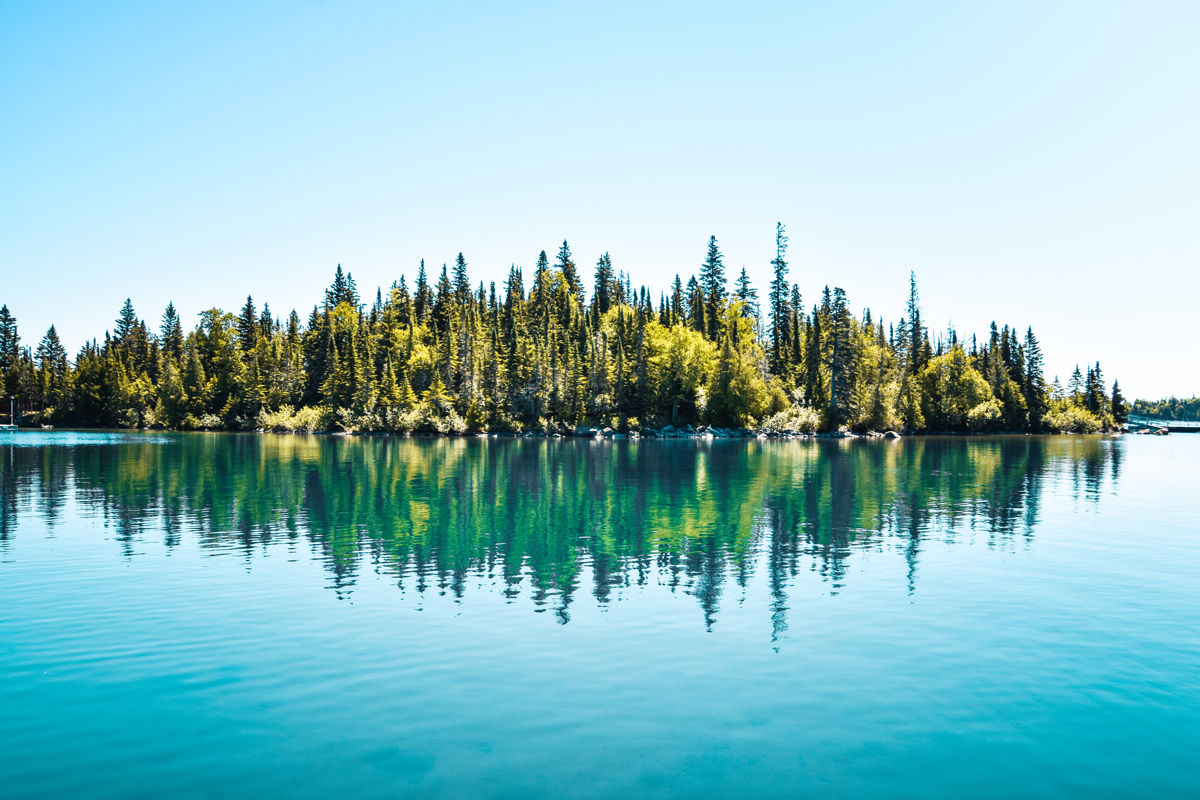
4 minute read
Isle Royale National Park
A remote, untouched treasure, seasonally accessible Isle Royale National Park is a rugged, isolated wilderness of forests, lakes and waterways where moose and wolves roam. Journey by private boat, ferry or seaplane, arriving at the park’s southwest end (Windigo, Michigan) or northeast end (Rock Harbor, Minnesota), where the only nontented lodging is found.
The town of Minong and the waters immediately surrounding the archipelago are an important part of the North Shore Ojibwe’s traditional cultural history. They were also part of the Ojibwe’s (Chippewa’s) ancestral land, used for hunting and trapping, as well as fishing, maple sugaring, gathering plants and practicing spiritual traditions.
According to the Ojibwe, the waters off Minong are home to the Mishipeshu, a mythological underwater lynx, both an important and potentially dangerous spirit being. Adding to the park’s allure, dive sites in Lake Superior feature several shipwrecks.
Isle Royale is open annually, from April 16 through October 31. The island is closed November 1 through April 15 due to unsafe, extreme winter conditions, which extend 4.5 miles out from the island into Lake Superior. To preserve its wilderness integrity, vehicles and wheeled devices, with the exception of wheelchairs, are not allowed on Isle Royale. Hiking, boating, canoeing and kayaking are the best — and only — ways to experience its expanse.
The Flora and Fauna
Having once crossed an ice bridge between Isle Royale and the Canadian mainland, park residents include red foxes, otters, beavers and massive moose. Gray wolves have also populated the park since the late 1940s.
Integral to the ecosystem, wolves help stabilize the moose herd, as they prey on the old, young, ill and injured among them. Moose provide stable winter hunting for the wolves, leading to the species’ dramatic comeback. Joining them are a wide array of amphibians, mollusks, birds and insects, some rare and others found only in the park’s inland lakes or streams.
Isle Royale is also home to over 600 flowering plants, including a number of rare species. Mosses form lush carpets, while nearly 30 species of ferns flourish and 600 different species of lichen cling to bedrock and balsam firs.
The Weather
Featuring a moist continental climate, Isle Royale sees comfortable summers and frigid, snowy winters. Generally, it’s partly cloudy year-round, with temperatures that fluctuate between -1 F and 76 F. Wondering about the best time of year to visit? It depends on what experience you seek, though warm-weather activities are best enjoyed from early July through late August.
On and around Isle Royale, consider all surface lake and stream water contaminated and non-potable. You’ll find helpful information about safely treating water in the backcountry here. Additionally, always check both land and water conditions on the park’s website, and with a reliable weather service, as conditions are temperamental and quickly change
The Hikes, Drives and Viewpoints
Isle Royale is 45 miles long and nine miles wide, with an area of nearly 207 square miles, making it the fourth largest lake-island in the world.
Scoville Point via Stoll Memorial Trail
For spectacular views, the 4.7-mile Scoville Point via the Stoll Memorial Trail is a moderately challenging but rewarding hike that winds to the northeast from Rock Harbor, Michigan, area between the forest and Lake Superior shoreline.
Greenstone Ridge Trail
Rigorous and lengthy, the point-topoint, 39.5-mile Greenstone Ridge Trail from Windigo to Tobin Harbor is the park’s longest and most varied. It typically takes between four and five days to hike in its entirety. Taking you through dense boreal forest and damp, thigh-high ferns, it travels up and down basalt ridges to the 1,394-foot pinnacle of Mount Desor, with beautiful viewpoints and wildflowers en route.
Rock Harbor to Daisy Farm Trail
A 6.7-mile out-and-back option, the Rock Harbor to Daisy Farm Trail offers scenic views along the Rock Harbor Channel and Mott Island.
About the Park
Location - Lake Superior, near the Canadian border
Established - April 3, 1940
Area - 132,018 acres










